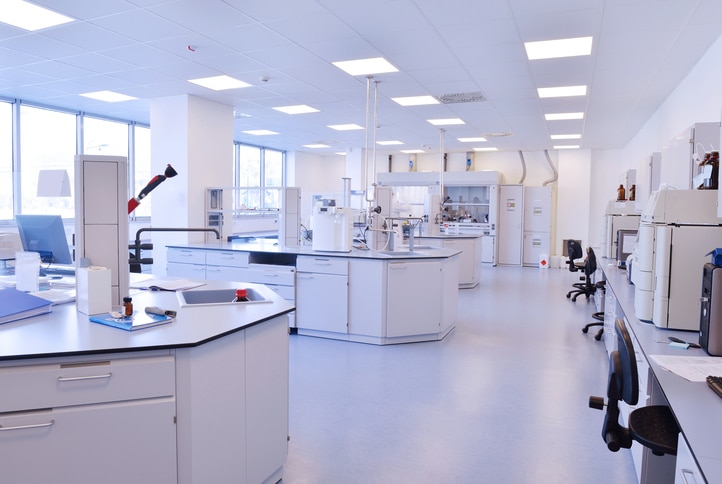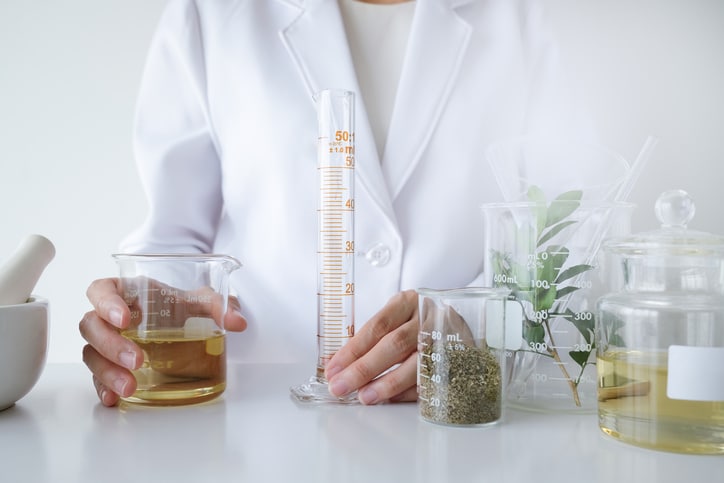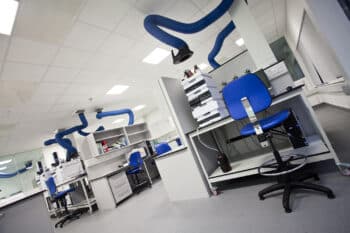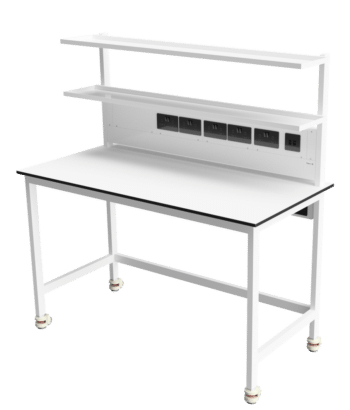Laboratory design is a multi-faceted challenge, it plays a huge part in the research process, synthesises elements of offices space and science lab, and has to be realised in a way that promotes efficient scientific work.

Though many opinions and questions arise over the best use of a research space, there are immutable truths that everyone can agree on: a lab’s arrangement and layout is there to make scientific research as smooth as possible and keep researchers as comfortable as possible. Optimal lab design means being able to do so without the addition of extra staff, all while improving productivity and minimising errors along the way.
Even the smallest error in design can lead to delays, an increase in mistakes and accidents, and compromised experiments, so it’s imperative that the arrangement of a science lab is to the highest of standards. If you’re looking to change the design of your working environment, keep reading; we’ll talk through what to take into account when it comes to the layout of your laboratory.
What should you consider when designing your lab?
Quick Navigation
- Pre-plan with scientists
- Location, layout and access
- How adaptable should it be?
- Safety is integral
- Last-minute pointers
Pre-plan with scientists
An extensive period of pre-planning is vital to the design of a lab. Workshopping with those who will be using the area themselves is essential, since the lab can be tailored to what the research requires, and superfluous elements can be quickly identified. Collaboration with scientists gives designers a precision which is especially useful for unique, uncommon scientific research.
Location, layout and access
In planning the design of your lab, its location and layout should also be taken into consideration. If it’s a multi-storey building, will it need the correct vertical transportation? Will researchers have convenient access to things like utility systems, waste disposal and the correct instruments?

The factors that influence room layout include things like ease of maintenance, accessibility of equipment, HVAC requirements, and ergonomics. Benches used for write-ups, admin work, and sample preparation should be placed around perimeter walls to improve access and work flow. Likewise, the bench height and depth should be taken into consideration, in order to account for the ergonomic use of instruments.
Consider the flexibility of the lab too; once everything is in place, it can be a task to change them. Building flexibility into your lab from the beginning reduces these challenges. This leads us onto…
How adaptable should it be?
Though we talked about gleaning insights from scientists as a means of fine-tuning the process, research methods and practices will change over time. The flexibility and adaptability mentioned above means your lab will be ready for things researchers might not necessarily need now but could be faced with in the future.
Even without these future implications, a flexible environment is important, since two or more researchers may be performing different tasks or have different requirements for comfortable working. In order for a lab to stay flexible, the build of the space should be easy to reconfigure. There are worktops and equipment stations that can be relocated to fit the goals of a new project, without the need for bringing in outside workers.
Arrangements that lessen the physical strain on the researcher, as well as plenty of natural lighting, can also improve researcher’s performance in a highly positive way.

Safety is integral
A well-designed lab means that researchers can focus on their tasks, rather than being overly vigilant when it comes to emergencies and accidents. In the design of your lab, having safety features to hand is vitally important.
Biosafety cabinets, fire protection and detection systems, emergency shower/eye wash stations, and well-marked exits should be easily accessible. In the knowledge that the correct measures have been taken, researchers can perform their required tasks to the best of their abilities.
The correct ventilation systems, tailored to researchers’ activities, should also be in place. Additionally, temperature control keeps users comfortable and can increase productivity.
Last minute pointers
- When you design your lab, it’s important not to go overboard in its arrangements. Common sense guidelines that crop up in the standards of lab layout are there for a reason. Use them as a foundation to base your design around.
- Work surfaces such as computer areas should feature ergonomic features like adjustability, appropriate lighting and equipment layout.
- Bench areas should have the requisite amount of knee space to accommodate chairs near fixed instruments and equipment, and for procedures requiring a lengthy amount of time.
- Consider where equipment is located in order to best enhance researcher productivity. Certain operations should be situated next to each other to minimise travel time to and from specific equipment.
However you plan to use your laboratory, InterFocus can help you create the perfect working environment. For more information about our bespoke fitted labs, visit our homepage or call our team on 01223 894 833.




